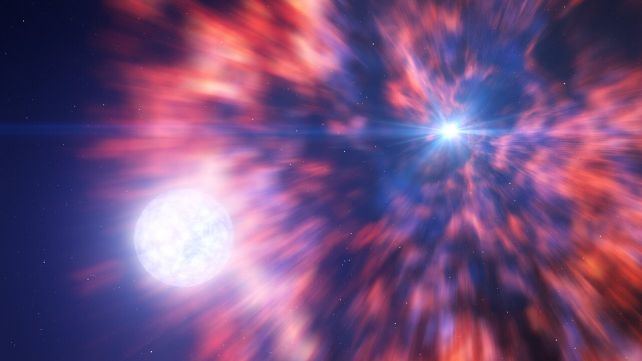SN 2022jli Offers Front-Row Seats to the Birth of Neutron Stars and Black Holes

In the vast canvas of NGC 157, a distant galaxy, an awe-inspiring cosmic drama unfolds. Enter SN 2022jli, a supernova spectacularly exploding, marking the climax of a massive star's journey. This stellar spectacle not only dazzled astronomers with its brilliance but also unveiled a celestial secret, allowing us to witness the celestial ballet that births neutron stars and black holes.
As a star approaches the final chapters of its cosmic saga, it exhausts its fusion fuel. A series of cosmic events ensue, where the star elegantly sheds its outer layers. What remains is a core unsupported by the outward pressure of fusion, leading to a dramatic collapse under the relentless pull of gravity. The outcome of this cosmic ballet depends on the mass of the star. Smaller stars transition into white dwarfs, those between 8 and 30 solar masses evolve into neutron stars, and the most massive stars, over 30 solar masses, transform into stellar-mass black holes.

Enter SN 2022jli, a cosmic protagonist with a peculiar twist in its narrative. Amidst its radiant performance, scientists noticed an intriguing rhythm – a change in brightness occurring every 12.4 days. This celestial heartbeat hinted at the presence of a surviving binary companion star, adding an unexpected layer to the unfolding cosmic narrative.

Intrigued by this cosmic enigma, astrophysicist Ping Chen and the team at the Weizmann Institute of Science embarked on a cosmic investigation. From the wealth of data emerged telltale signs – bursts of gamma radiation and hydrogen movement in the vicinity. The changing brightness, akin to a cosmic ballet, unfolded as the remnant of SN 2022jli interacted with its companion.
Picture the celestial partners, locked in an intricate dance. The remnant gracefully orbits through the puffy atmosphere of its companion, absorbing hydrogen expelled during the supernova. This cosmic tango continues, with the hydrogen heating up and casting a celestial glow into the cosmic theater.

Yet, the exact identity of the compact object remains a cosmic enigma – is it a black hole or a neutron star? The allure of this discovery lies in its uniqueness; for the first time, astronomers are witnessing the birth of such an object in real-time. It's akin to witnessing a celestial magic show, the grand finale of decades of cosmic observation, analysis, and theory. As Ping Chen fittingly puts it, "Our research is like solving a puzzle by gathering all possible evidence. All these pieces lining up lead to the truth." So, here's to unlocking more cosmic secrets – a thrilling journey through the cosmos, where each discovery unveils a new chapter in the grand cosmic narrative!
